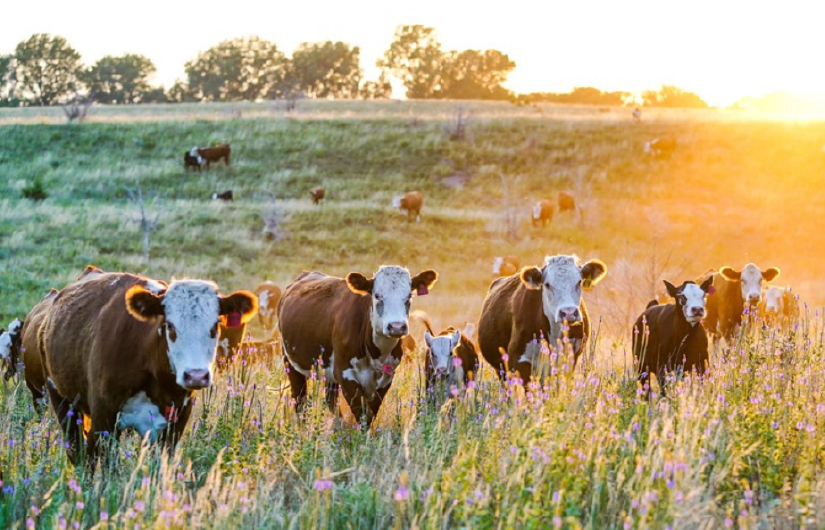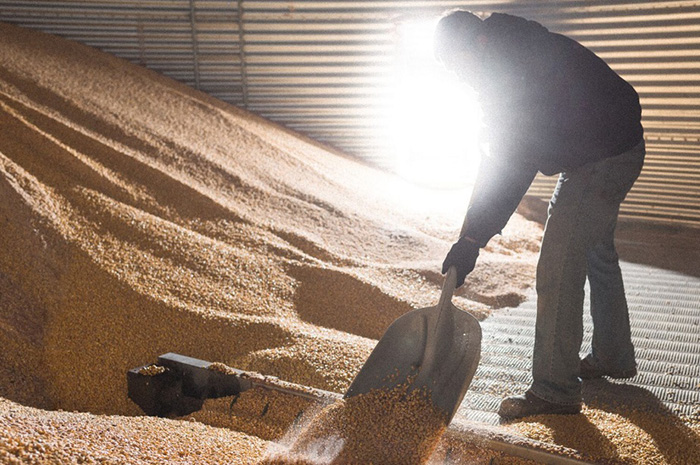The beef industry is an important part of the agriculture economy in the Midwest, and Minnwest Bank is a longtime partner of the Minnesota State Cattlemen’s Tour. I had the privilege of attending the MSCA Summer Tour this year. From the presentations and demonstrations at our visits to various farms and businesses, to the meaningful conversations over dinner, this event was an unforgettable display of the passion and innovation that makes the Minnesota beef community so exceptional.
The Summer Tour is an annual event that showcases beef feedlots and cow/calf operations, new farm technologies, and insights from experienced cattlemen and women. The event is educational and an opportunity for industry professionals to network, but as Past President Grant Breitkreutz explained in our conversation back in July, it’s also taken on a festival kind of atmosphere.
Having grown up on a dairy farm in southern Minnesota, I was familiar with a lot of the techniques and terminology I encountered throughout the day, but I also learned a lot at each stop and in conversation with other attendees on the bus. It was a really interesting and fun experience. Here’s a rundown of the day:
6:30 a.m. - The Journey Begins
On the morning of Tuesday, July 18 I arrived at the Pipestone County Fairgrounds bright and early.
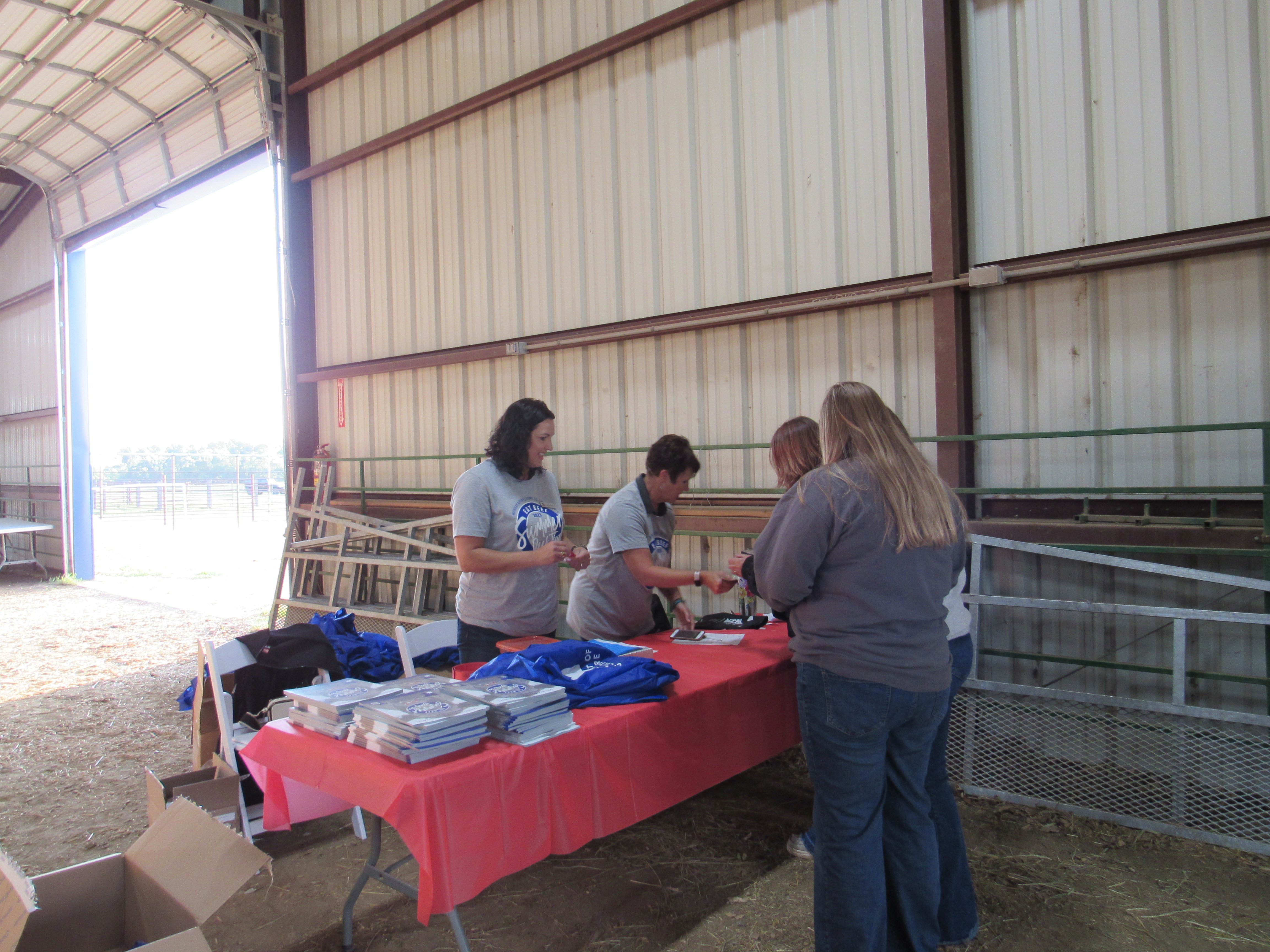
Mary Squires, Minnwest Bank Business Banker, and Darcy Carlson, Minnwest Bank Market President, both based out of the Tracy branch, were working at the registration area greeting attendees and helping with registration.
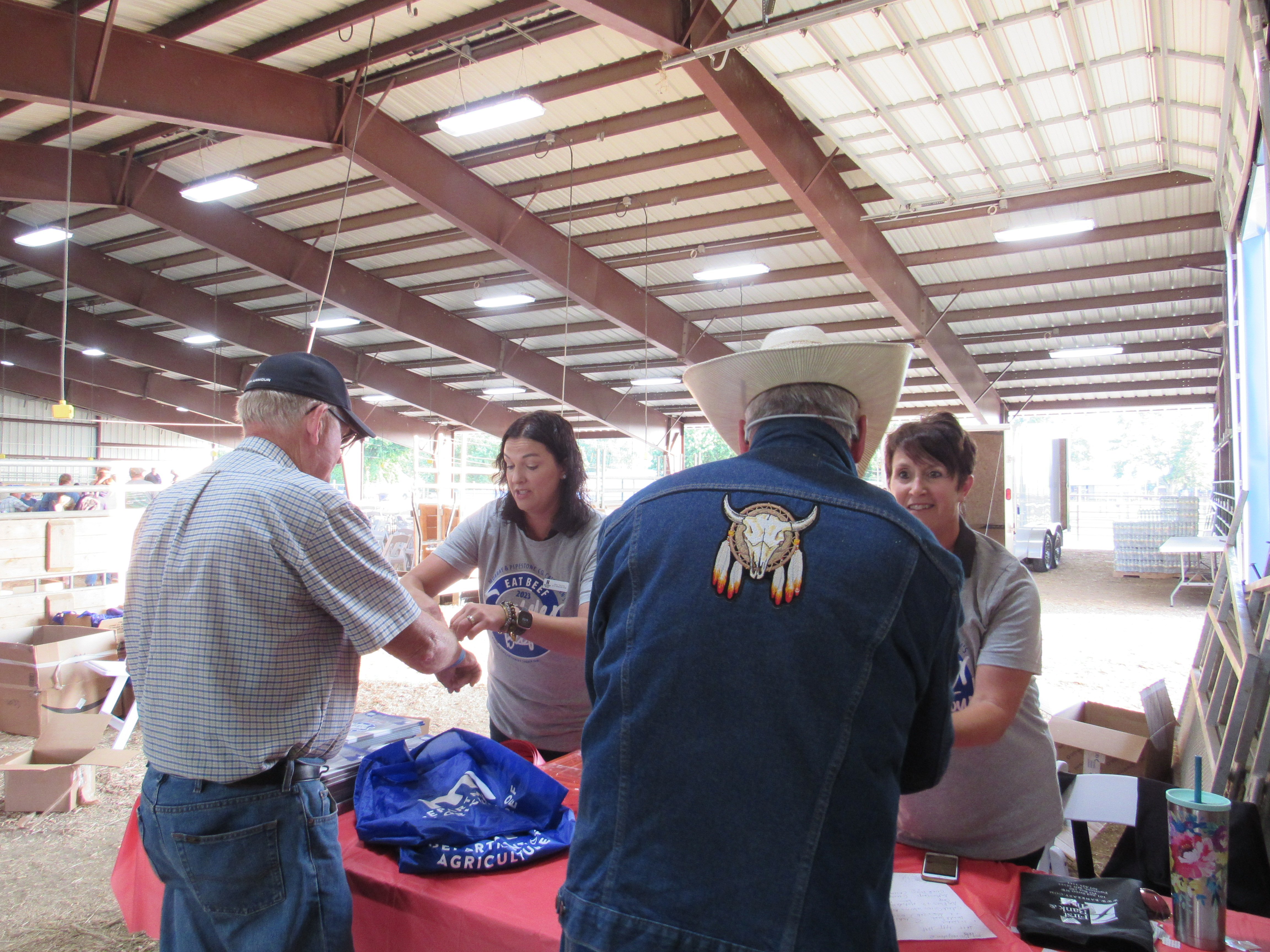
As I checked in, the excitement was palpable. Cattle enthusiasts from different backgrounds gathered to embark on a day of exploration and learning. Farmers, families, and visitors from as far away as Wyoming lined up for breakfast and found their way to the buses.
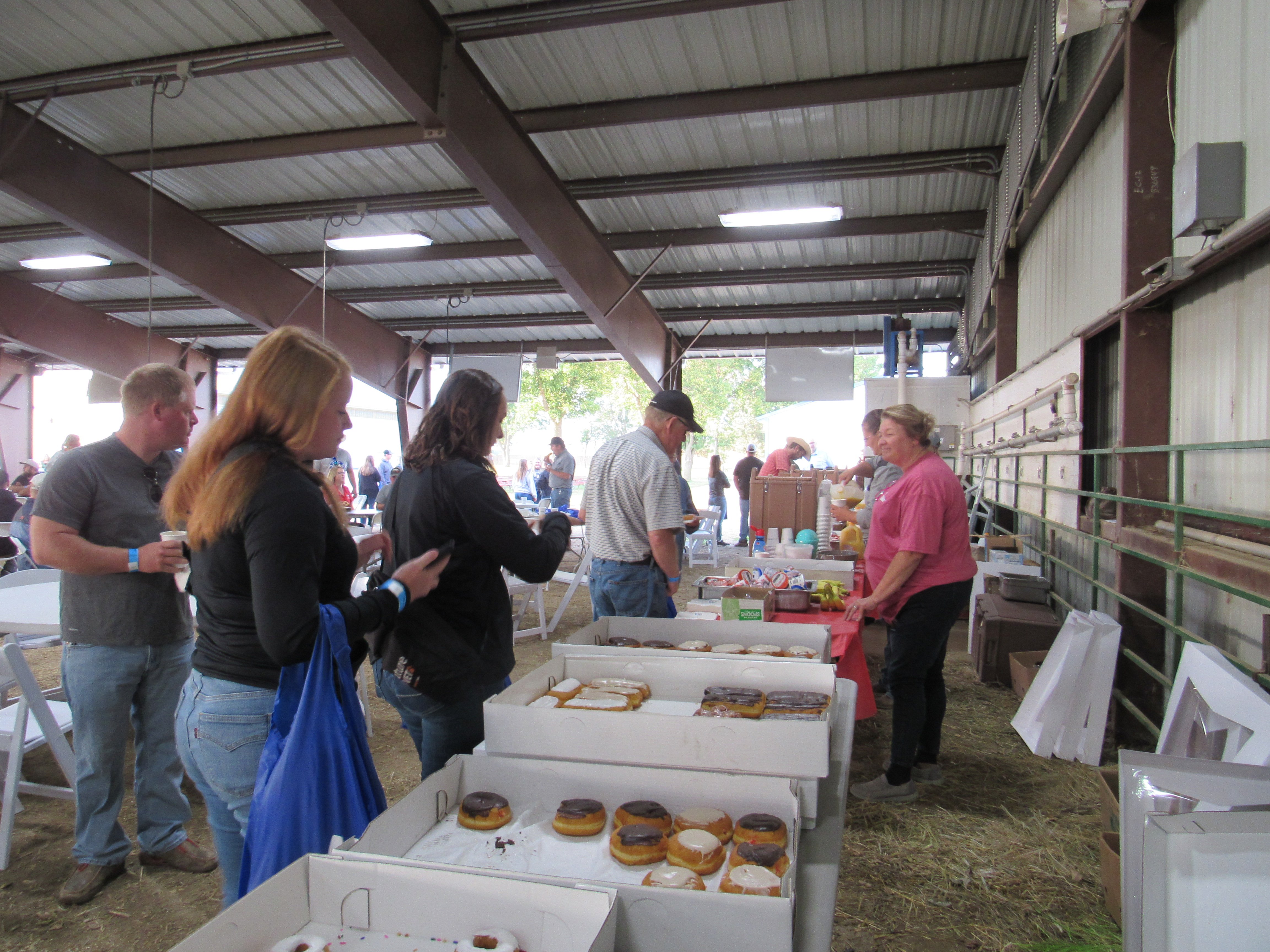
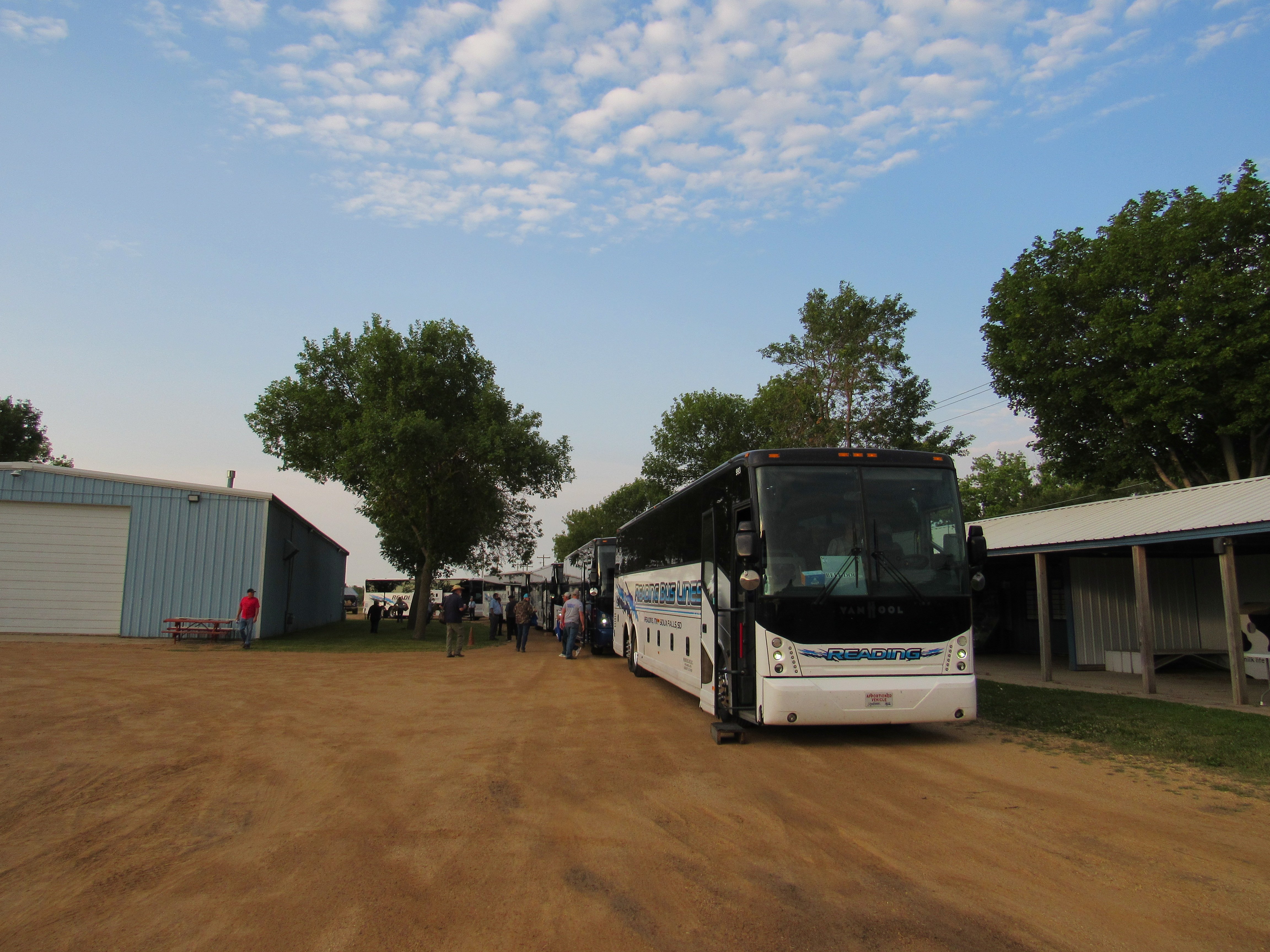
7:00 a.m. - On the Buses
The buses lined up, ready to take us on a journey across Pipestone and Murray counties. Eight unique tour stops awaited us, each offering a different perspective on cattle farming processes and techniques.
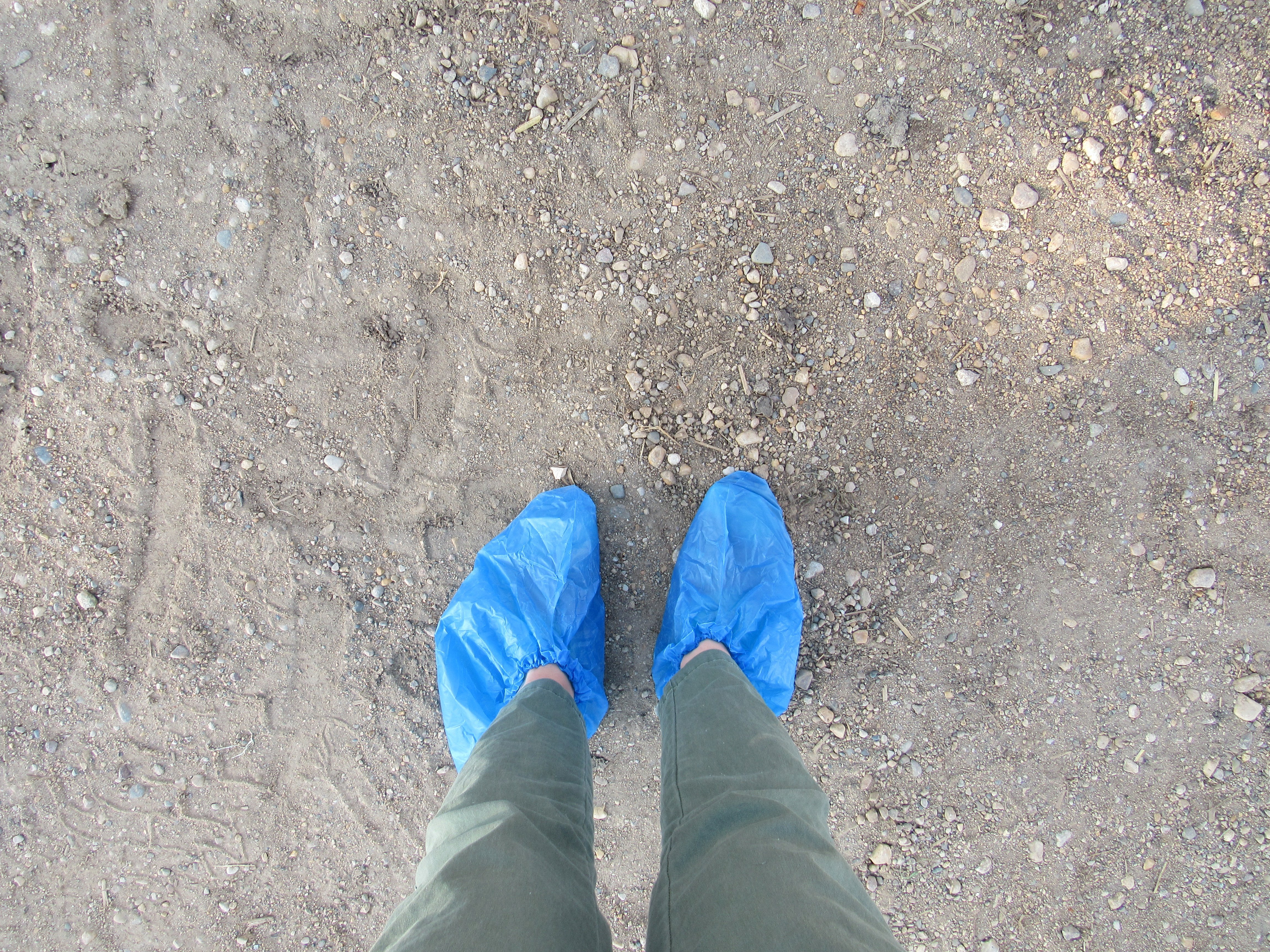
At each stop, we donned blue plastic booties to protect the farm from potential biohazards.
7:50 a.m. - Brinkmeyer Feedlots
Our first stop was Brinkmeyer Feedlots. Owner Matt Brinkmeyer has been involved in the beef industry since he was a child, having been raised as part of a family farm first established by his grandparents. Today, Matt and his family run successful cow-calf and cattle finishing operation. They have mostly Black Angus at their feedlot, as well as some crossbred cattle.
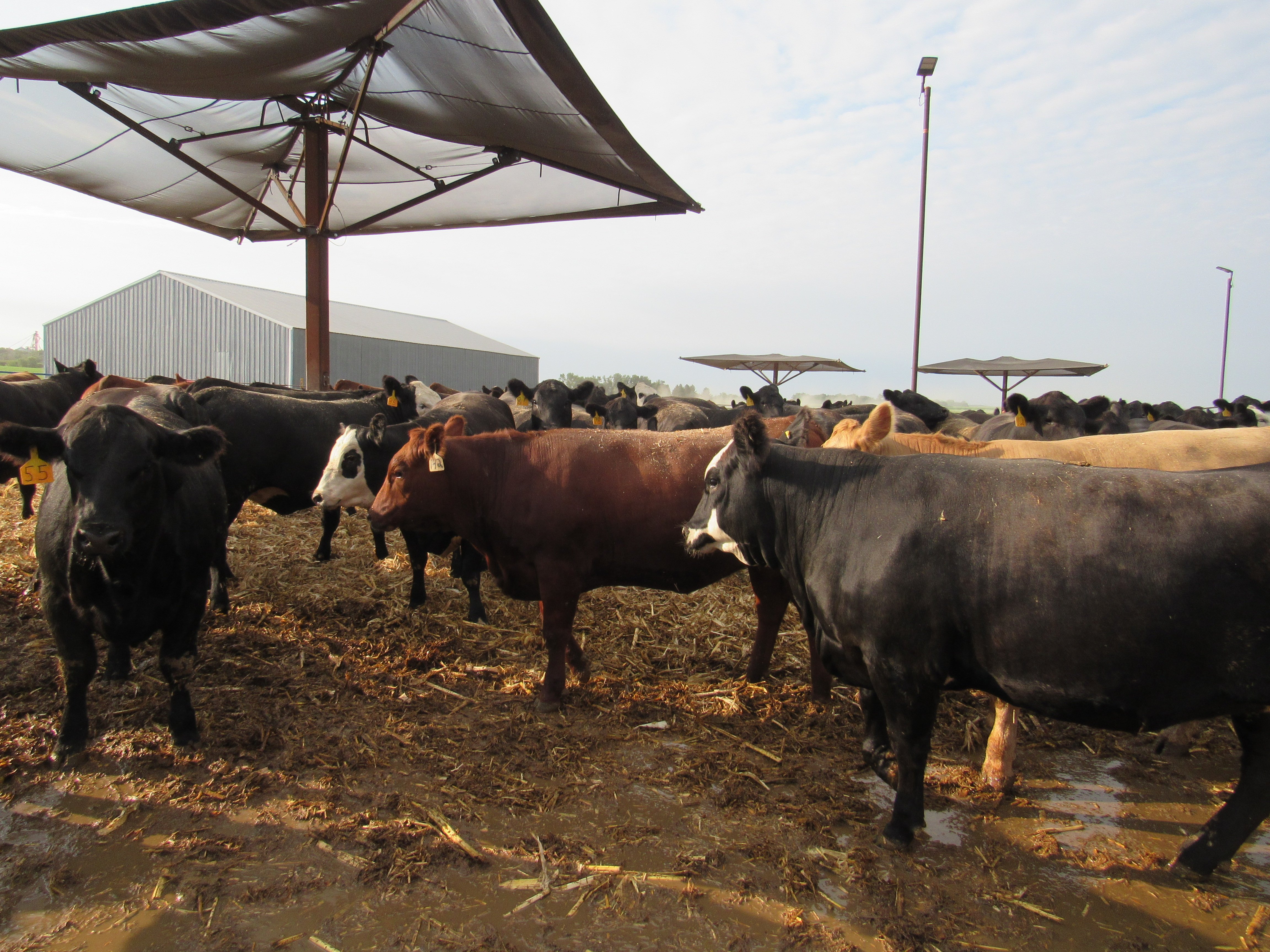
Sun shades are used on the feedlot to help keep the animals cool in the summer sun. This technology has been shown to be superior to watering at keeping cattle comfortable in the heat. The sun shades were the topic of many questions and conversations amongst attendees.
At this stop, we also caught up with Nick Malacek, Business Banker at the Marshall branch, and Tom Dobson from Minnwest Insurance at the Minnwest Bank booth. It was a great opportunity for bankers and Minnwest staff to connect and chat with many of the beef industry producers and enthusiasts who were in attendance.
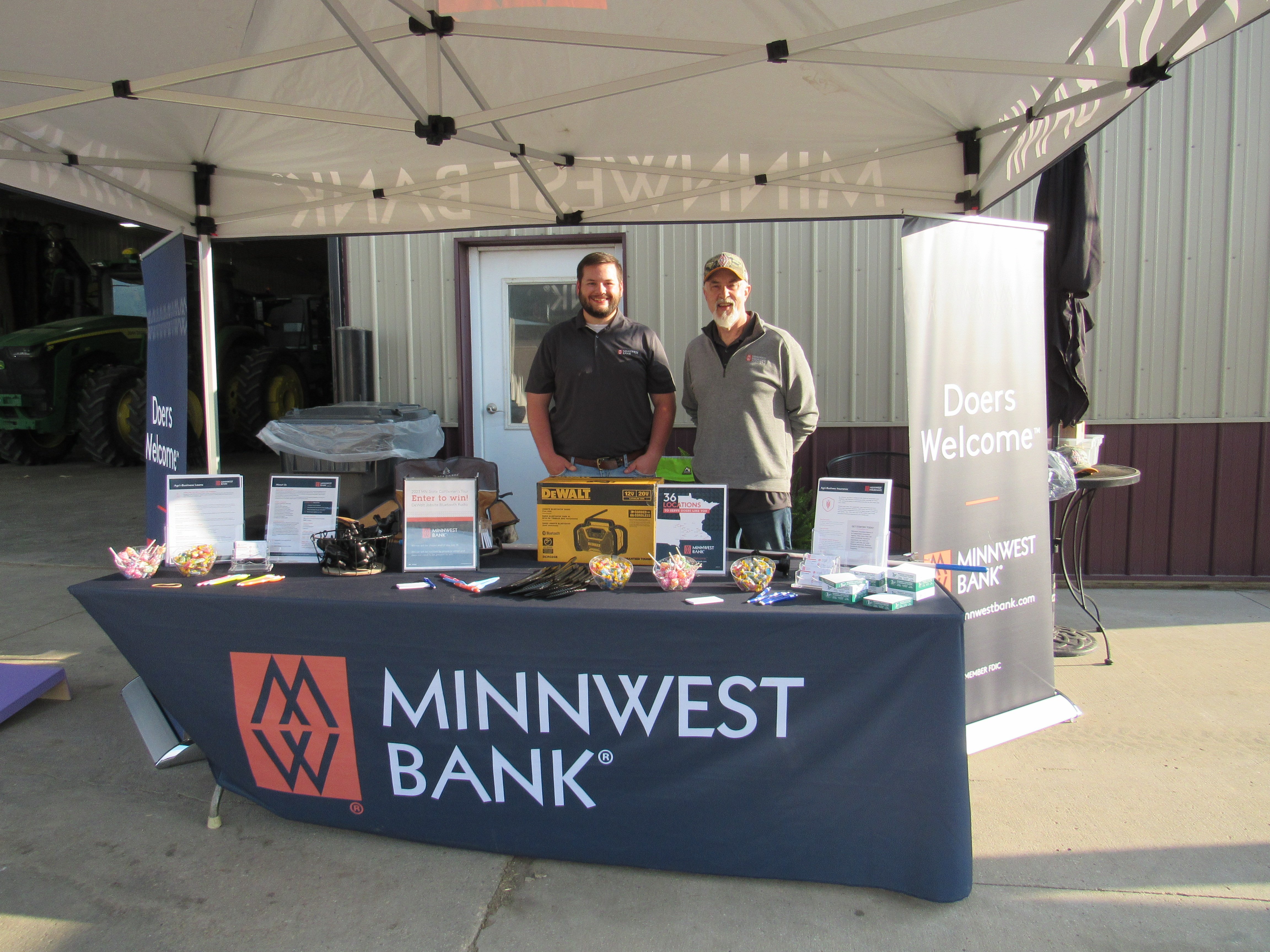
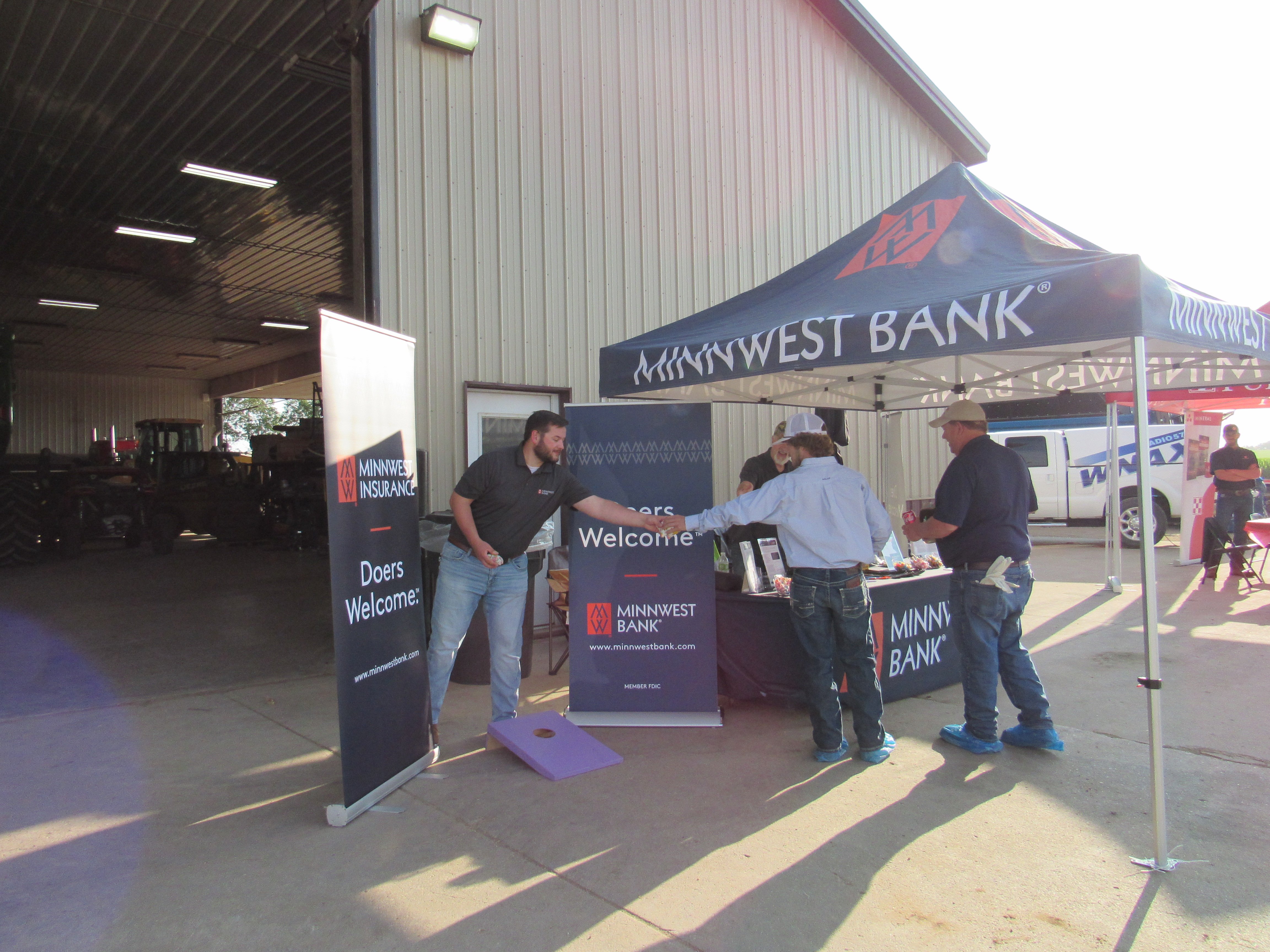
8:45 a.m. - Chestnut Angus
Our next stop was at Chestnut Angus, where owner Glenn Johnson showed off the specialized calving barn he designed at his farm. Johnson started his cattle operation as a sophomore in high school after purchasing a single purebred registered Angus heifer. Since then, Chestnut Angus has grown considerably and gone on to develop an impressive reputation both locally and internationally. He now runs the operation with his wife and two sons.
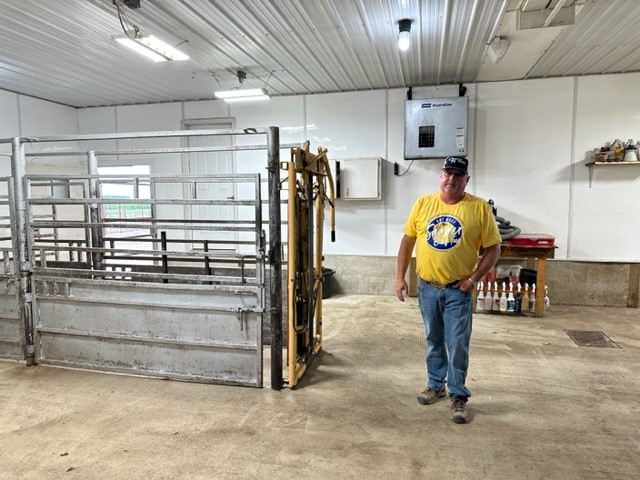
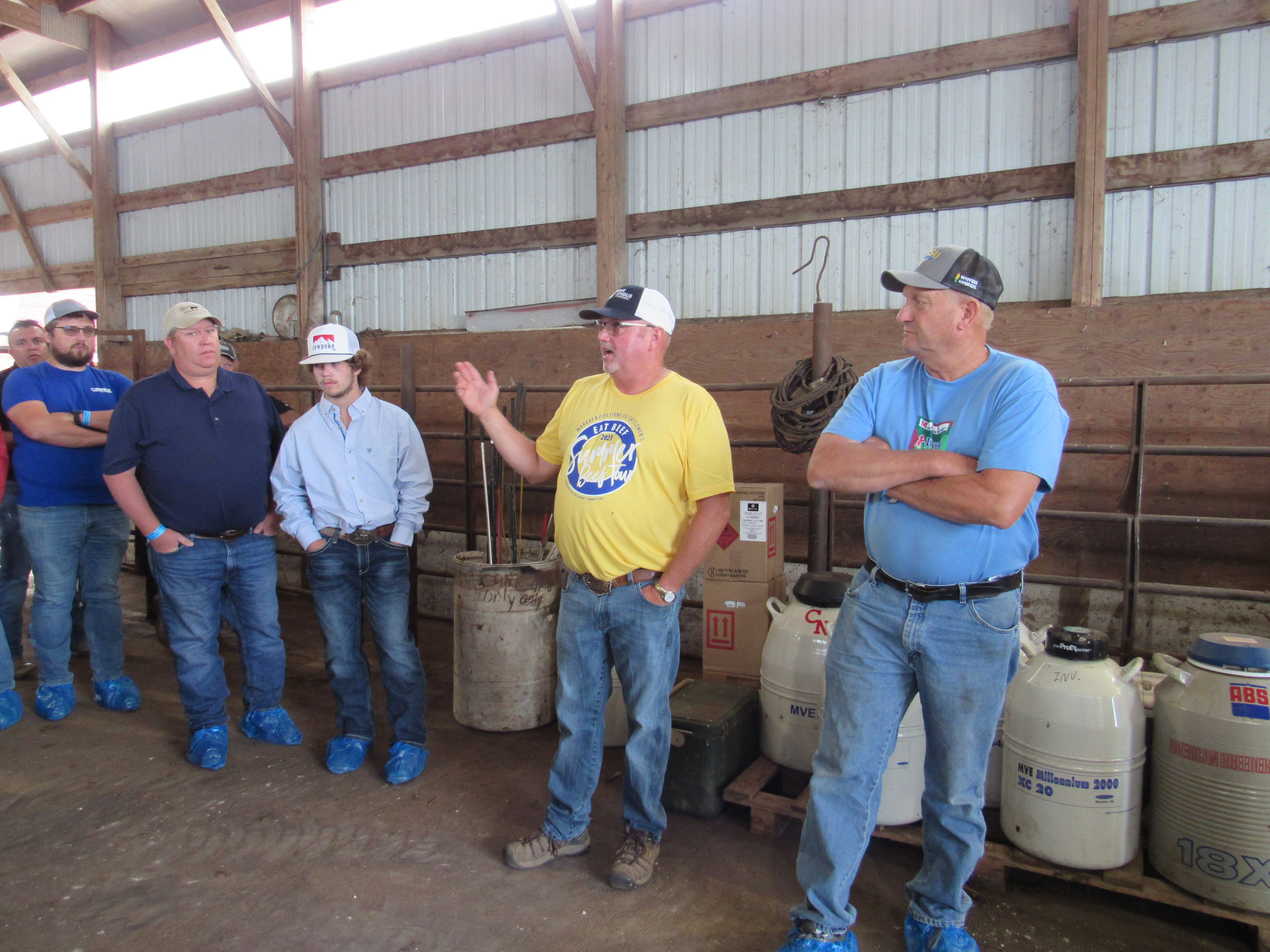
Each winter, the Johnsons enter their bulls and heifers in the Denver Stock Show, where they have been very successful in the pen shows. Chestnut Angus was also the first Minnesota breeder to sell bulls to Russia, and semen genetics from their line of cattle are sold to producers around the world. It was interesting to hear how the Johnson family uses video technology to monitor the cows that are expected to calve.
9:30 a.m. – Heartland Colony
Our next tour stop was at Heartland Colony, which was founded in 1989 by a group of Hutterites from South Dakota. Jerry Wipf is Minister and President of the Heartland Colony, which is located in Lake Benton, MN and today is home to 92 people.
The families at Heartland Colony live and work on the farm, raising cattle, hogs, and poultry, as well as producing crops and tending to an impressive garden that spans several acres. The colony is self-sufficient, so all the meat and produce they need is raised right on the farm. Manure from the barns is hauled to their own fields. Most of the cattle they raise are sold at around 12 months old, but the colony also handles all of their own meat processing.
Modern technology has helped make Heartland’s agriculture operations more efficient. We weren’t able to tour the colony on foot, but our tour guide did a great job answering questions for participants on the bus. It was fascinating to see this unique tour stop and learn about the Heartland community.
10:45 a.m. – Baustian Feedlots
Around mid-day, we arrived at Baustian Feedlots in Jasper, Minnesota. Erik and Brittney Baustian farm with Erik’s parents, Mike and Cyndy Baustian. The Baustians began buying Holstein bottle calves in 2011. When the industry demand shifted, they transitioned in 2015 to buying Western beef cattle. Today, they primarily raise Black Angus and Hereford, Simmental, or Charolais crossbred cattle.
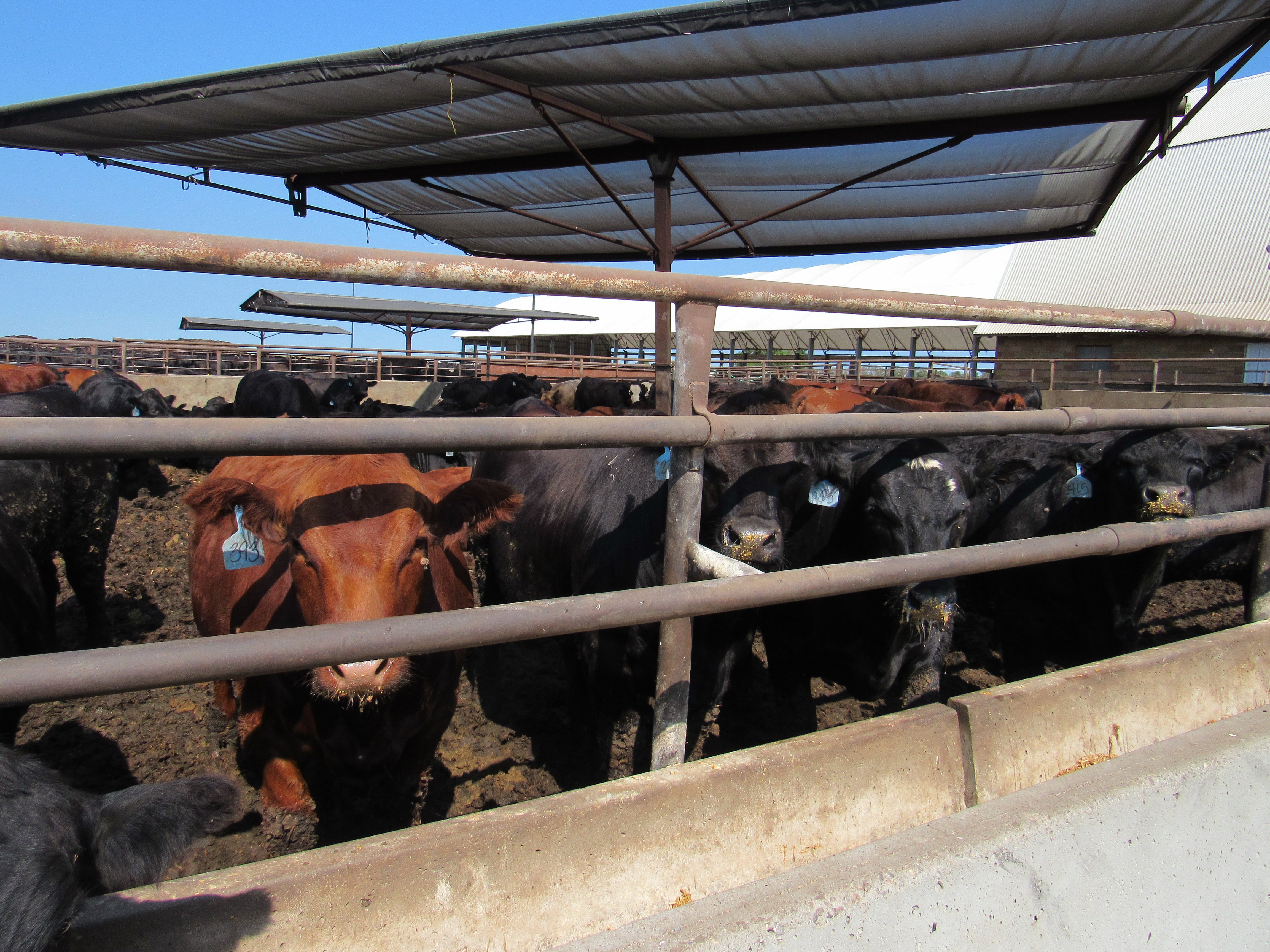
The Baustian feedlots are home to a massive 6 acres of continuous concrete that slopes to a single spot, where it is run through a sump pit and pumped into an above-ground pit. The above-ground pit is necessary because beneath the feedlot is solid ledge rock. Nearly 10,000 yards of gravel has been hauled away from the feedlot over the years to create the complex pen system necessary to create a proper slope.
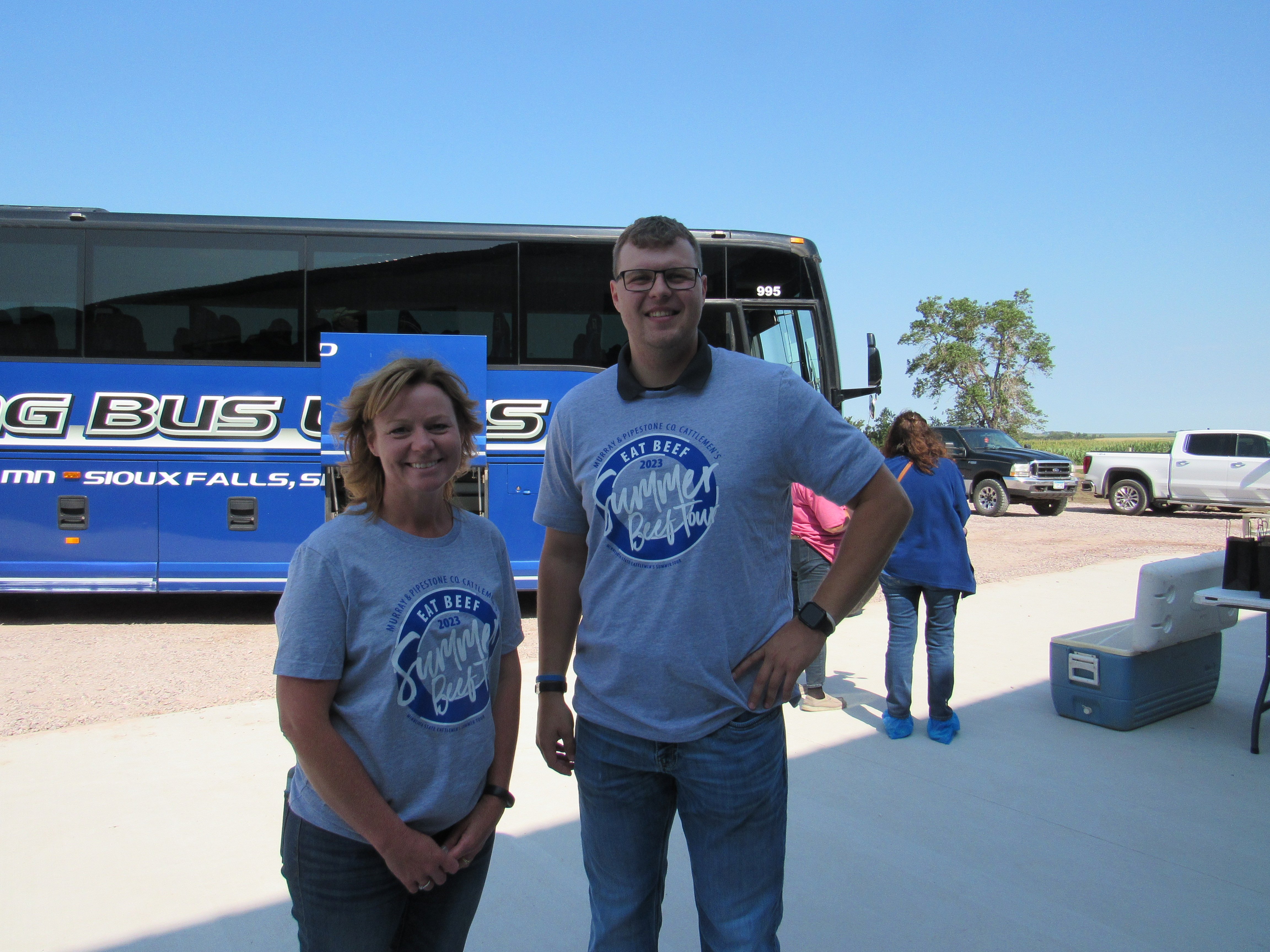
As we were preparing to head to our next destination, staff from Minnwest Bank met us with lunch. Melissa Fick, Market President and Matt Overgaard, Business Banker, both based out of our Luverne branch, helped out by serving sandwiches, chips, and other provisions.
11:45 a.m. – Monogram Meats
After lunch, the tour stopped next at Monogram Meats in Chandler, MN. Established in 2006, the Monogram Foods plant is the largest employer in Murray County with nearly 400 employees. Since around 75% of the employees live in Worthington, MN, the company has actually organized a bus and van service to transport workers to and from the plant each shift.
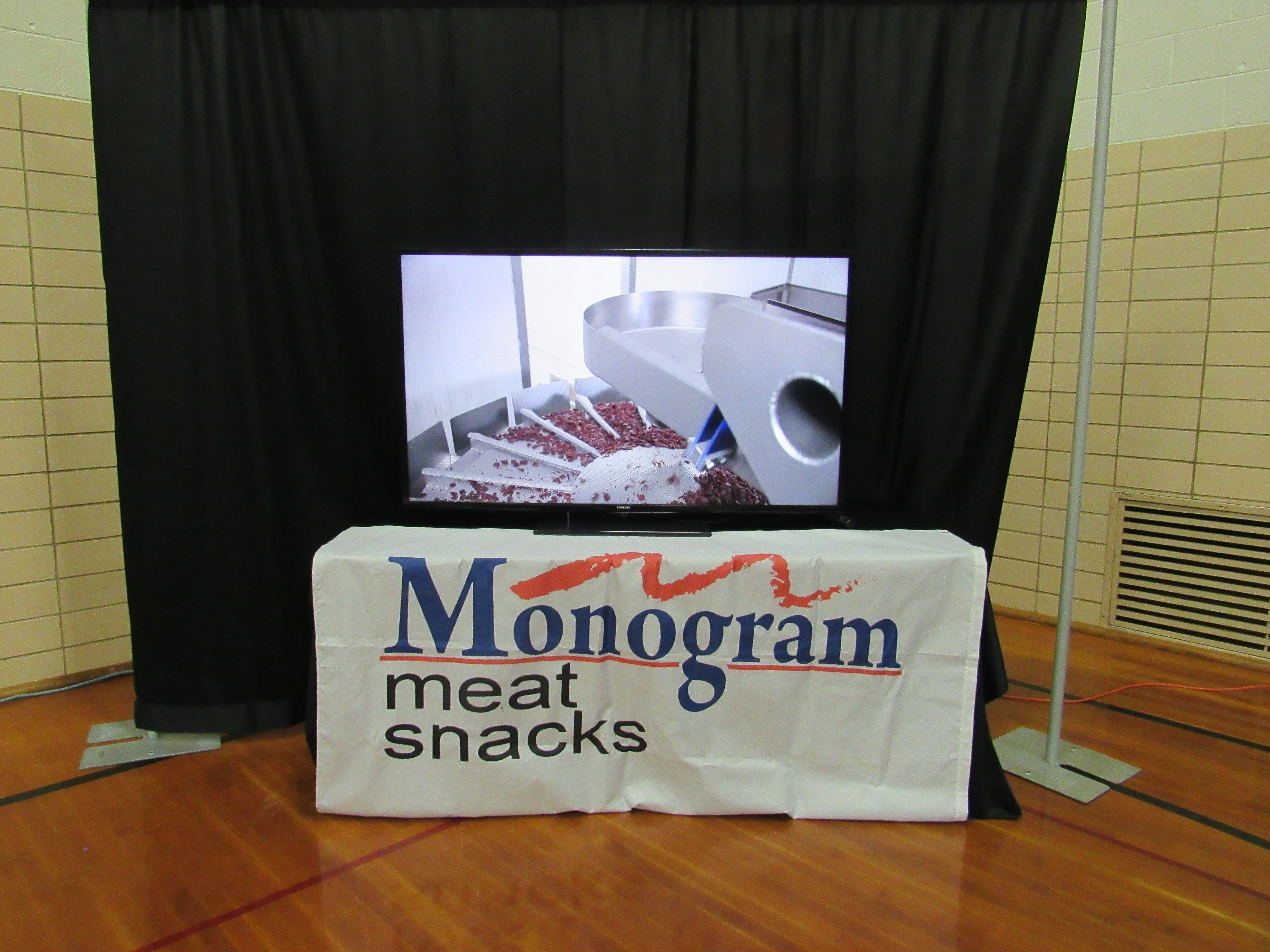
The plant in Chandler is one of 13 facilities operated by Monogram Foods. It produces beef jerky, meat sticks, and other products for brands like Trail’s Best and Circle B. In recent years, Monogram Foods has made significant upgrades to the injection line and energy-efficient lighting.
Although this tour stop was at the training center and not the production facility, our time at Monogram Meats was very educational. Video demonstrations of the processing and rendering were on display for viewers, providing a real opportunity to see how the sausage is made.
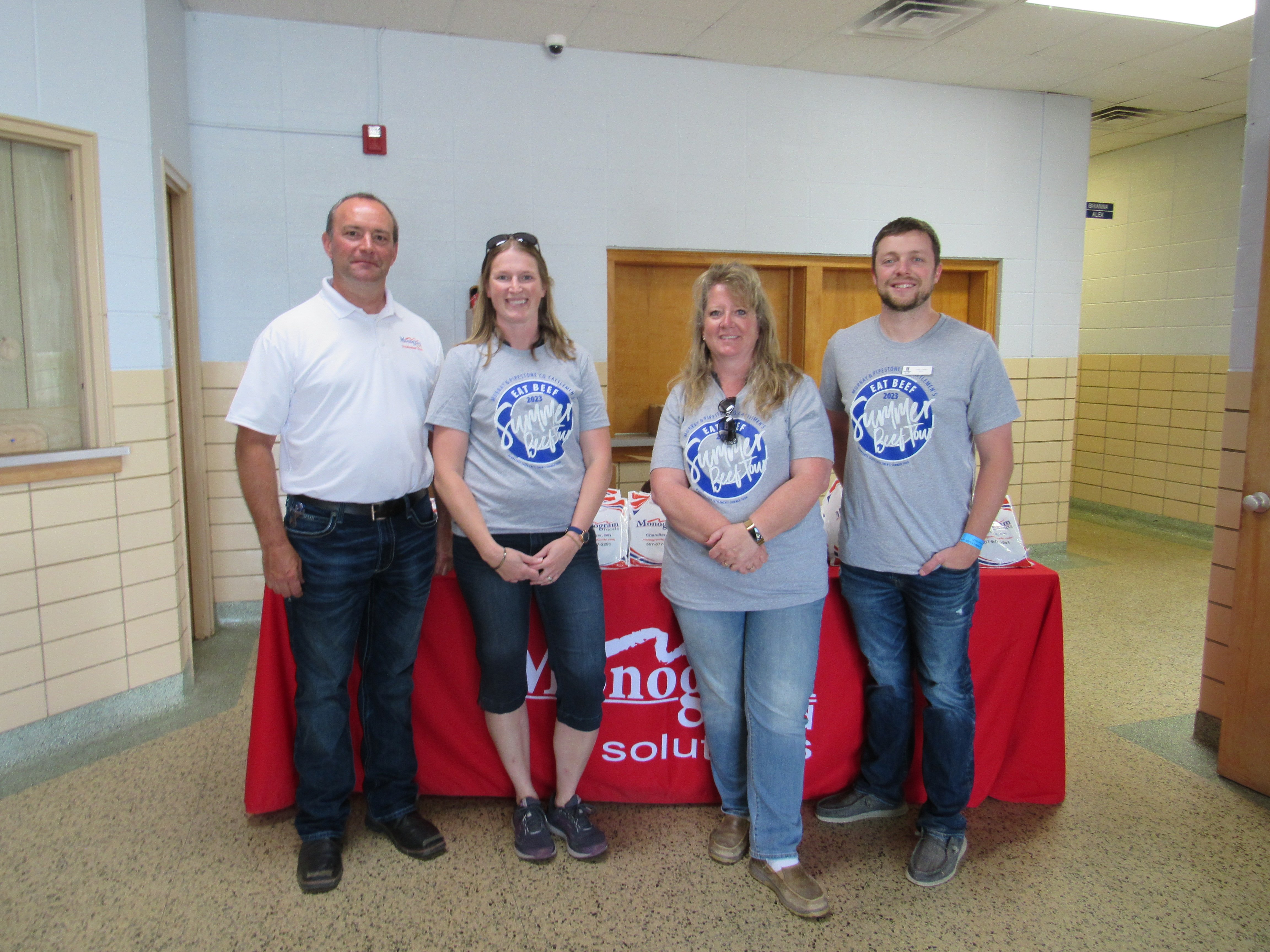
From left to right: Dan Huisken of Monogram Foods; Kelli Sorenson, Minnwest Bank Credit Analyst, Redwood Falls; Theresa Hacker, Minnwest Bank Business Banking Associate, Redwood Falls; and Josh Onken, Minnwest Bank Business Banker, Slayton.
12:45 p.m. – Schurr Concrete
Our next stop on the Summer Tour was to Schurr Concrete, a family-owned local business that supports the cattle industry by providing a variety of precast concrete products for farms and feedlots. Although they also carry a variety of offerings designed for homes and business, agriculture products top their list of requested items. Schurr Concrete creates the slats, steps, and decks for cattle producers, meaning their products are literally and figuratively at the foundation of successful agriculture operations.
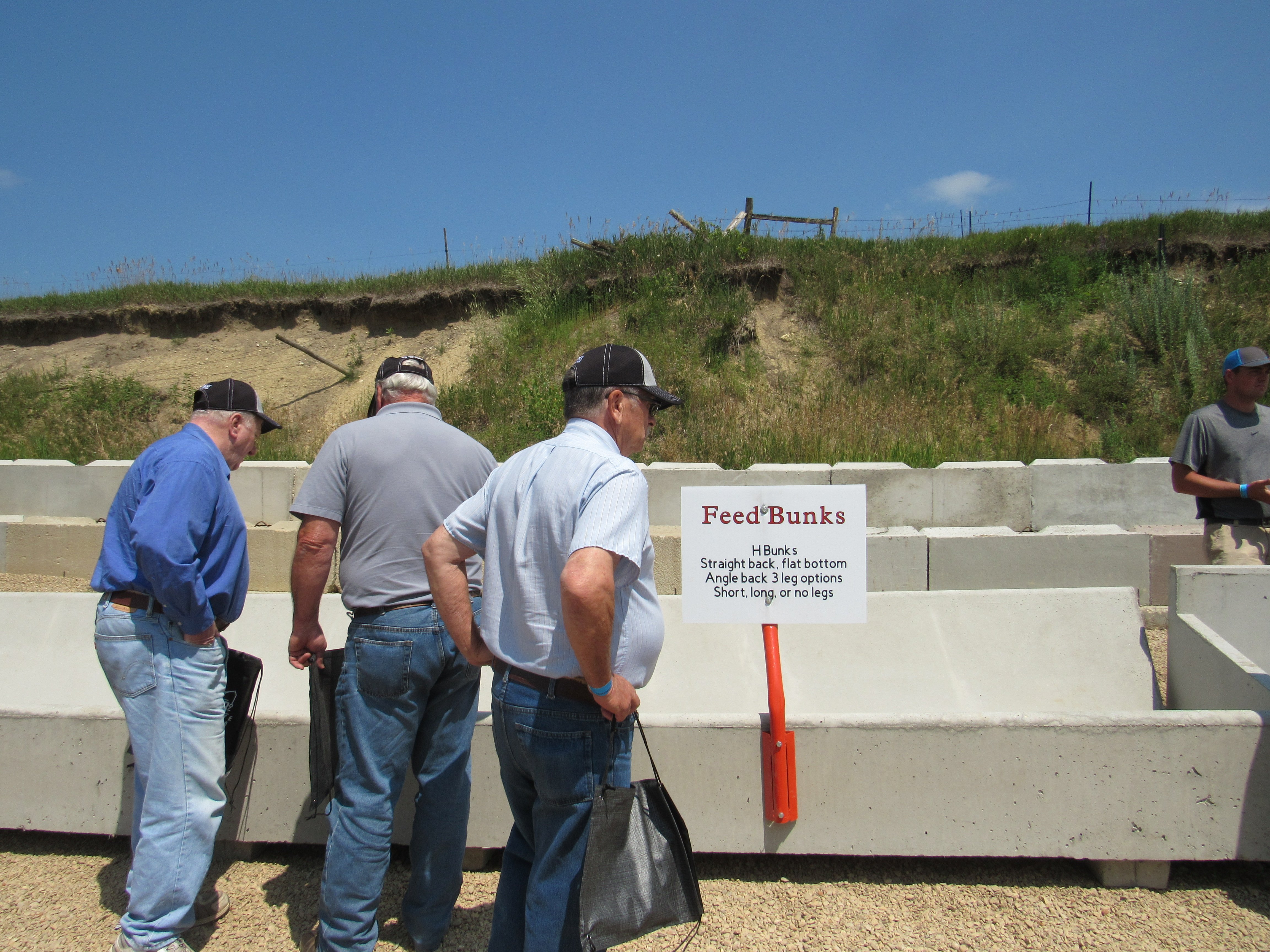
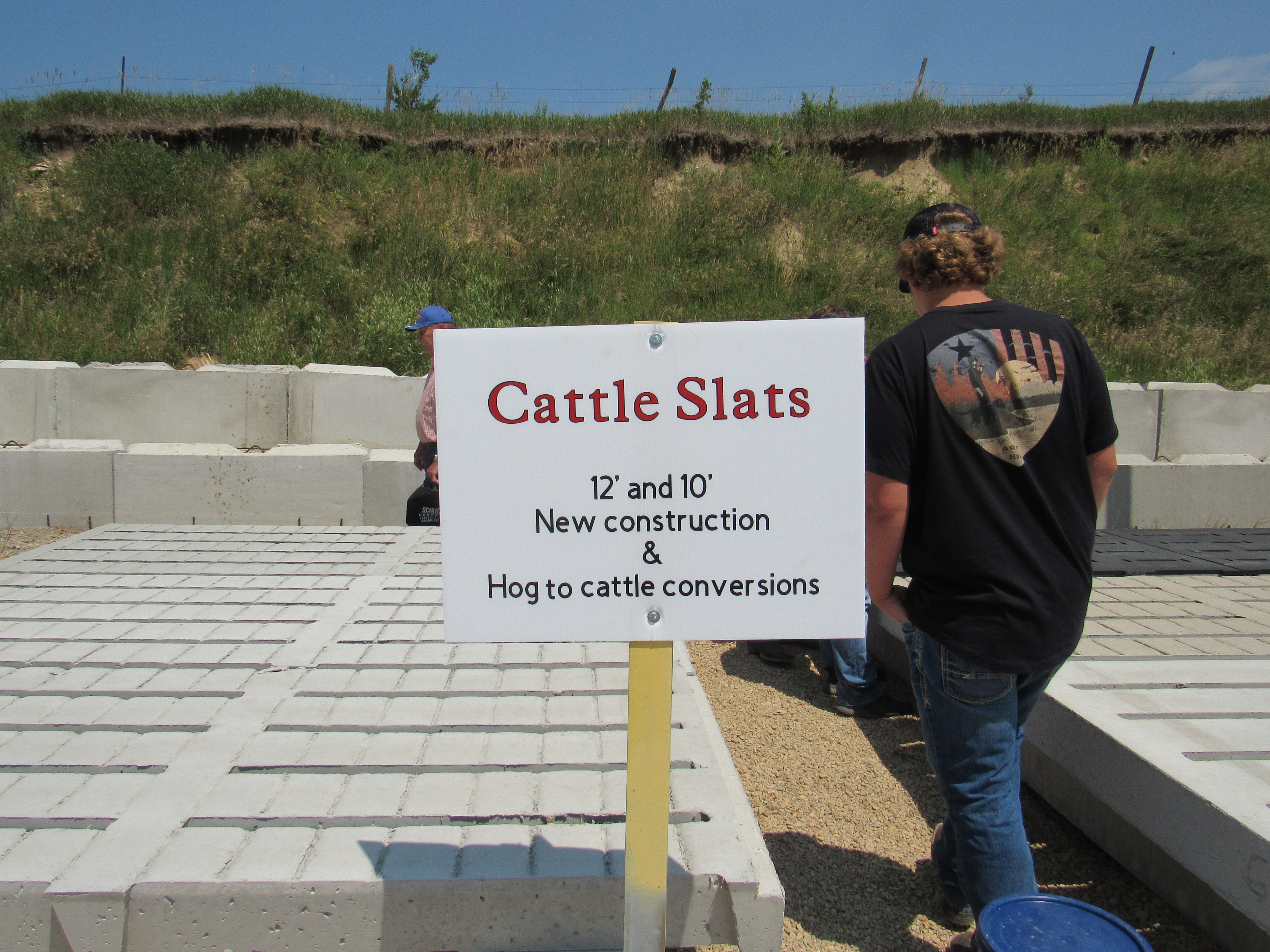
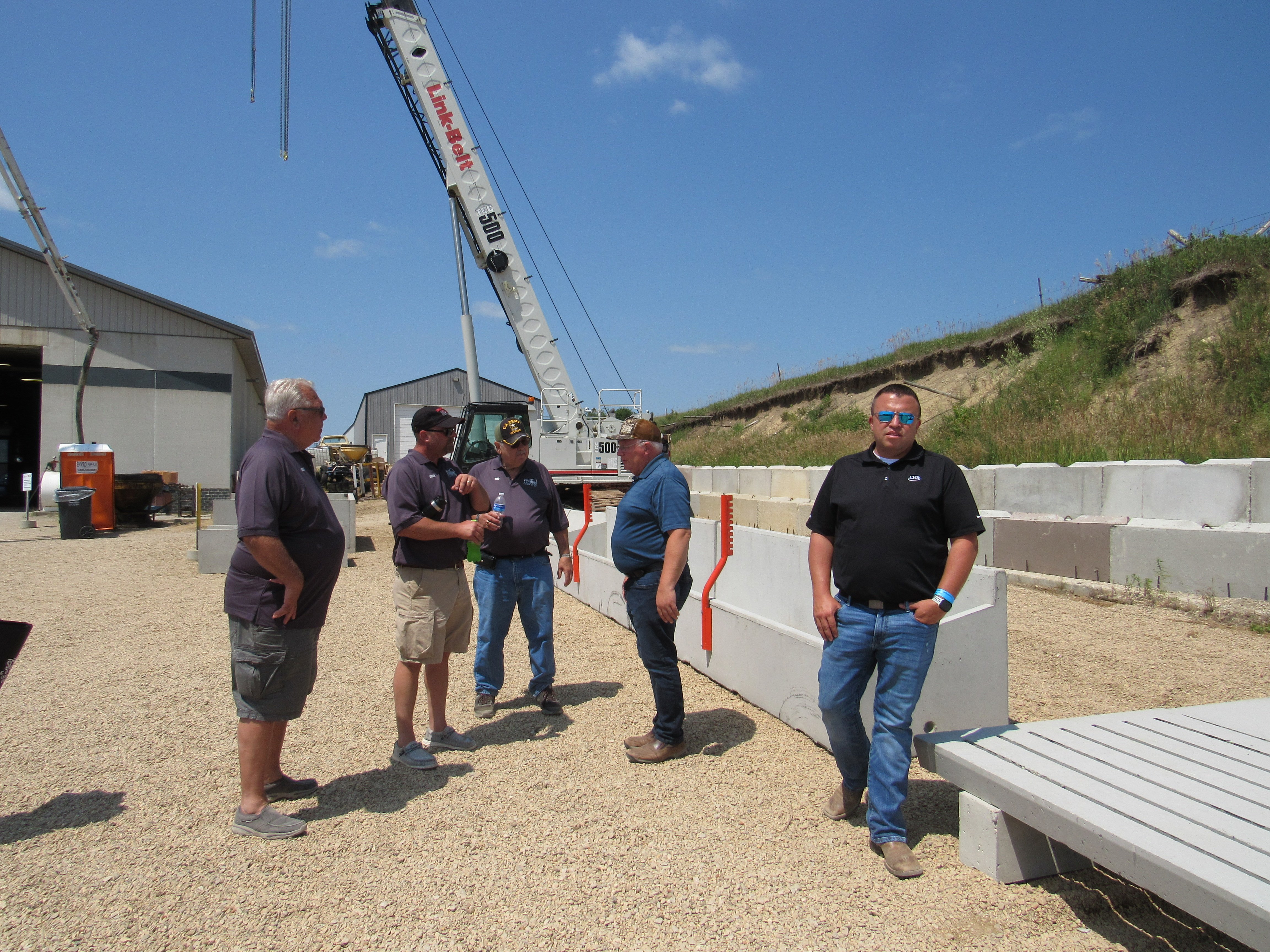
Schurr concrete has dealt with their share of obstacles over the years, including inflation and shortages that have affected the price of concrete per yard. A tornado destroyed their original building location in 1992, but fortunately, they had already expanded to the nearby communities of Luverne and Adrian. In 2010, the Schurrs sold off their plant locations that produced ready-mix concrete so they could focus on the precast business. Today, Schurr Concrete remains a valuable part of the agriculture community in Murray County.
1:30 p.m. - Verlinde Farms
Our next stop of the afternoon was to Verlinde Farms near Tracy, MN. Ryan Verlinde and his family raise Wagyu beef, a Japanese cattle breed. Their extra intra-muscular fat cells, also known as marbling, produces a more favorable meat product.
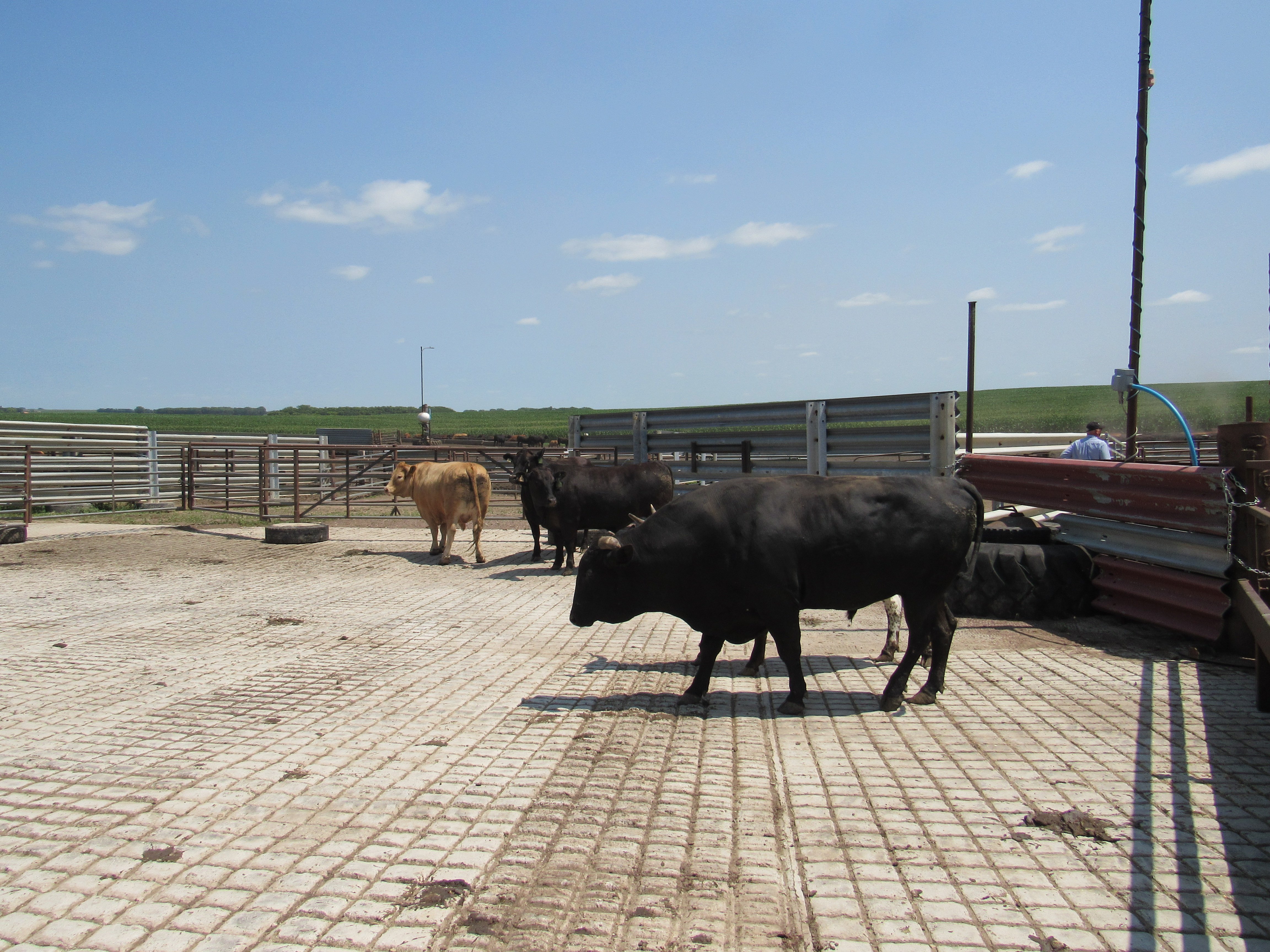
Verlinde says he was first introduced to the breed 12 years ago and he was initially skeptical that the cattle, native to Asia, would survive a Minnesota winter, but says they were hardy and adaptable.
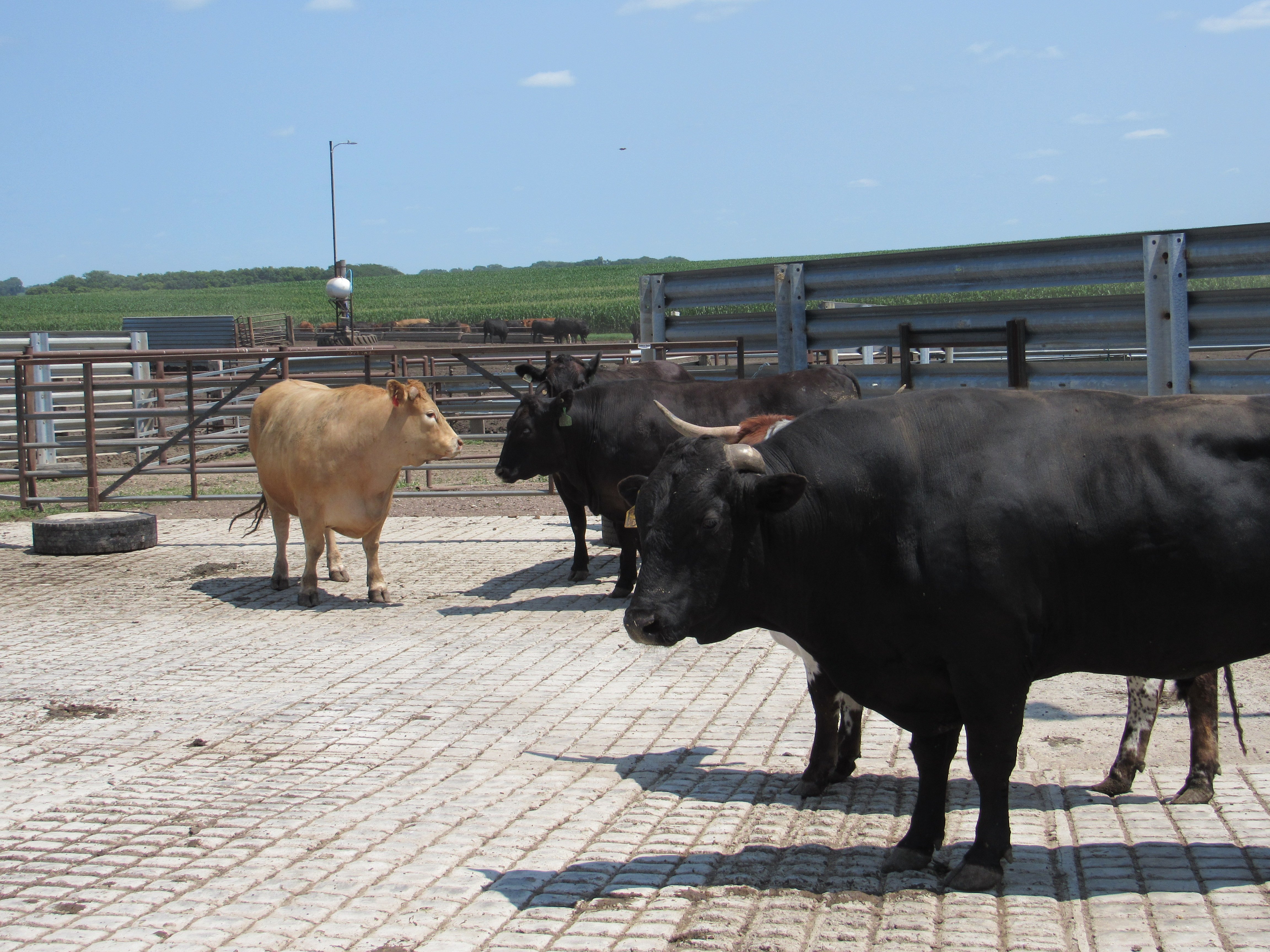
Verlinde has multiple farms and feedlots for his cattle. He says Verlinde Farms uses a series of electronic tags to track where each animal came from. He says everything from feeding to loading animals is tracked through a sophisticated computer system which can be easily accessed via iPads.
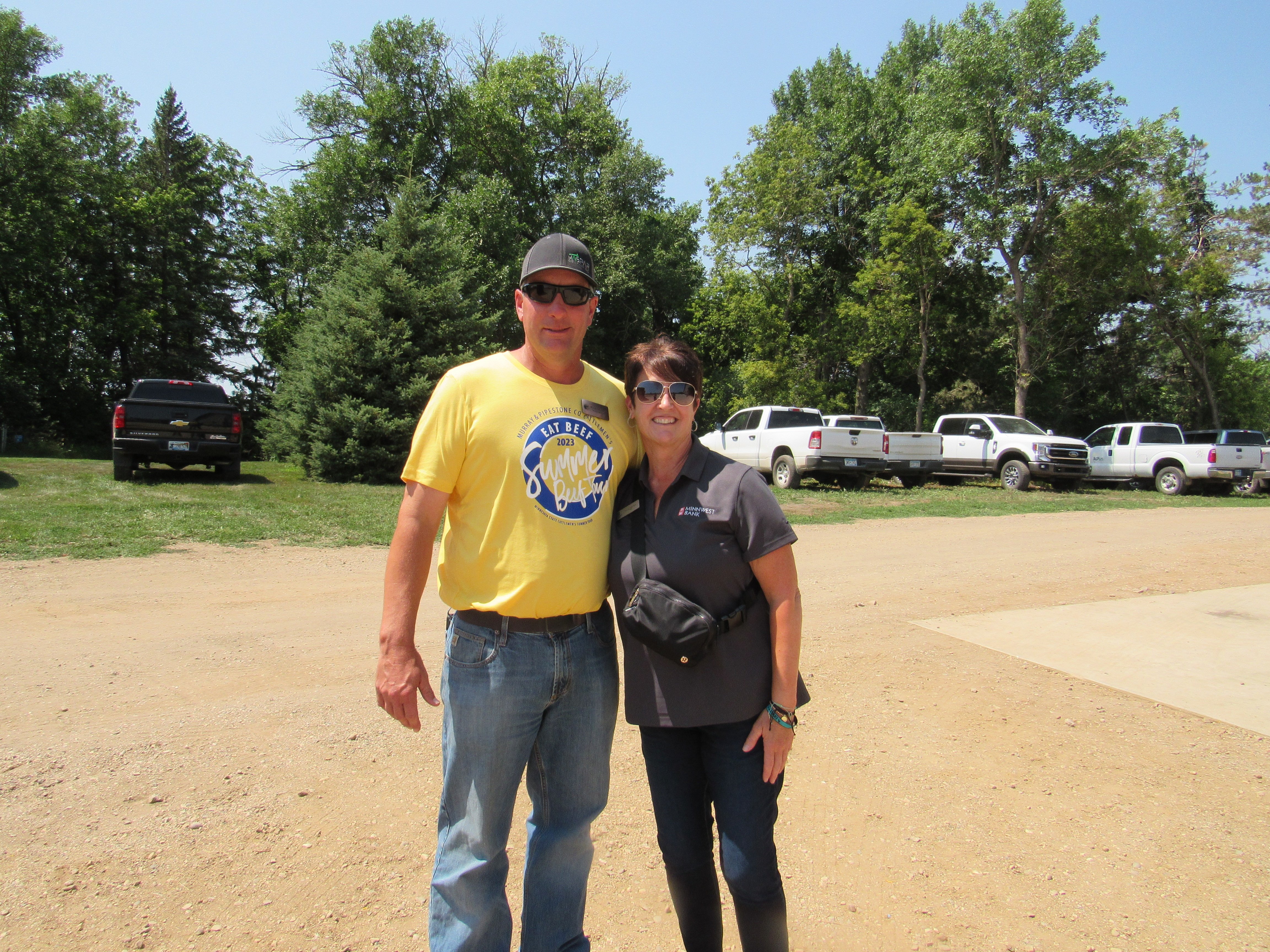
Ryan Verlinde and Darcy Carlson of Minnwest Bank.
3:15 p.m. - Ford Feedlot
Our final stop of the tour was to Ford Feedlot, located between Lake Wilson and Woodstock, MN. Owner Bobby Ford grew up on a dairy farm, but the family made the change to the beef industry after a tornado damaged their acreage. Ford started his own operation with 35 head of cattle in the early 1990s. He purchased a farm two miles from his dad’s property.
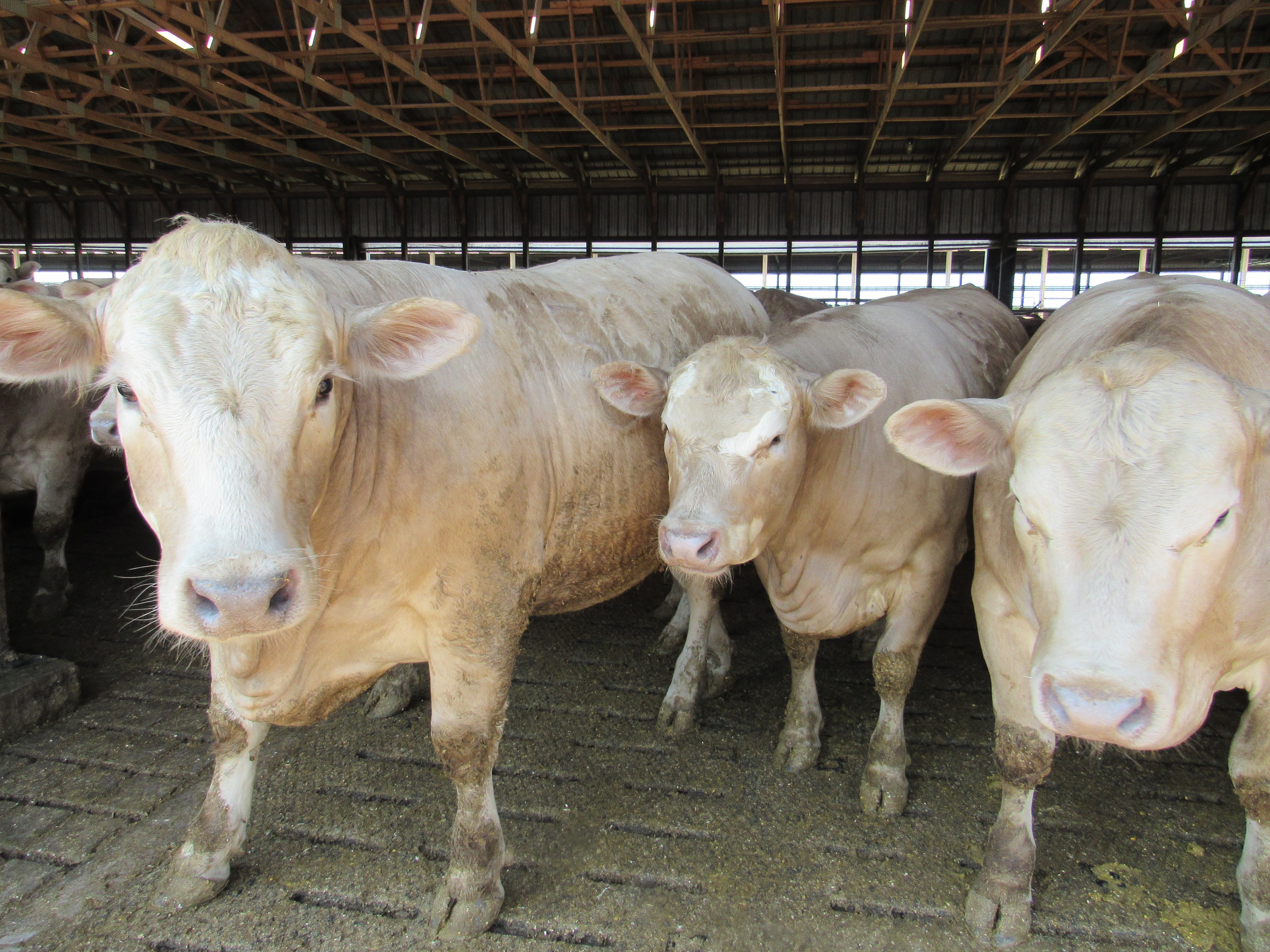
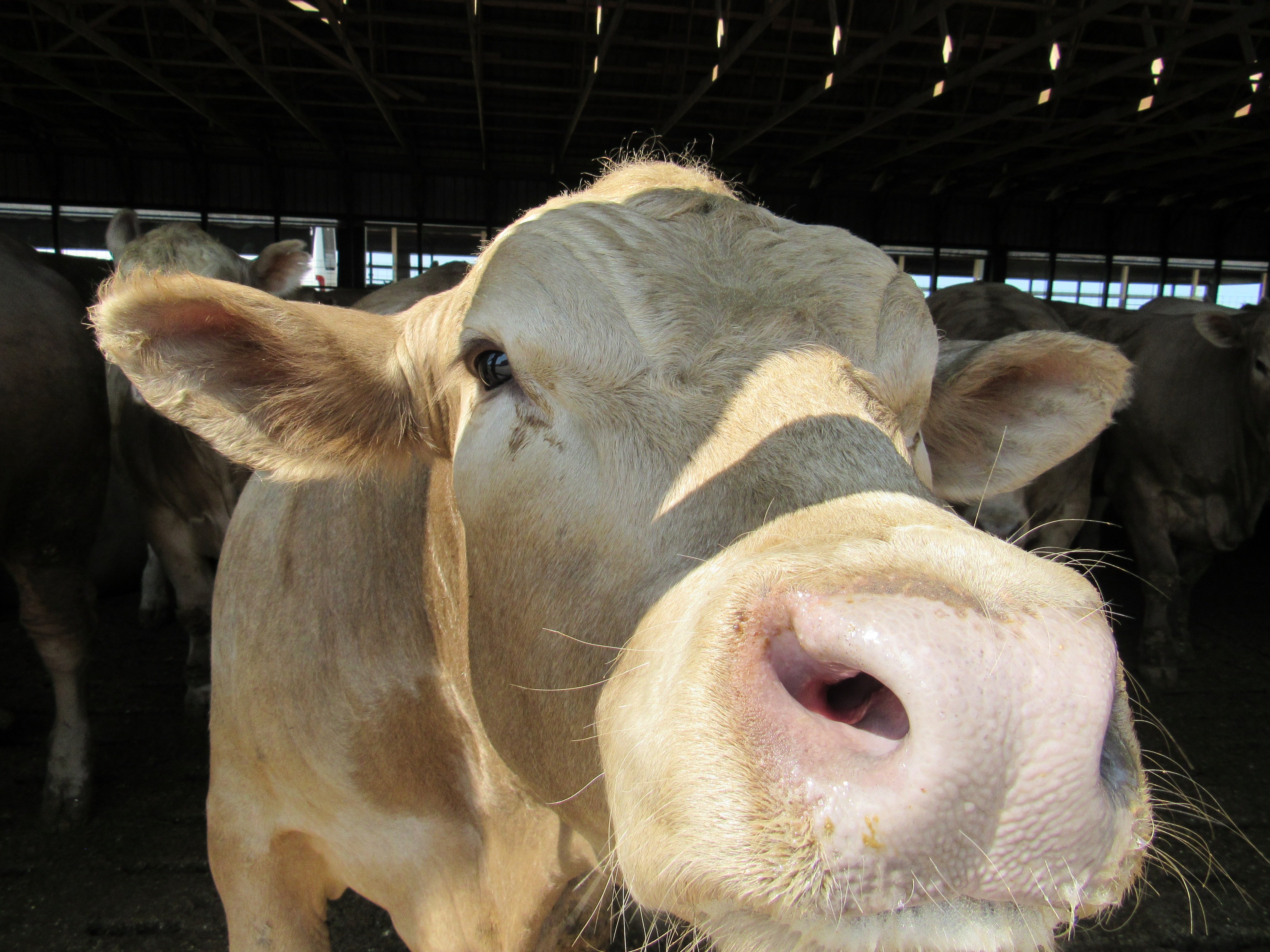
Today, his feedlot can hold over 2,000 head, the majority being black Angus influenced. This year, he is feeding four pens of Charolais cross. These docile, friendly cattle are white or cream colored and short in stature. Bobby and his son, Brady, do all of the farm work themselves, and his daughter, Taylor, also helps out when she’s home from college.
4:45 p.m. – Back at the Fairgrounds
After the tour concluded, the buses headed back to the Pipestone County Fairgrounds. On our way back, all the attendees on the bus with me commented on how organized and well-kept the farms and feedlots looked, how great the weather had been, and how knowledgeable the farmers and producers were at each tour stop. At the fairgrounds, we were greeted with live music and a steak dinner. Everyone I spoke with agreed it was a fantastic and well-planned tour.
Glenn Johnson of Chestnut Farms, also Tour Chairman for Pipestone County, was quoted in the Pipestone Star: “In all my years of going, there’s places that just one little thing you pick up, that saves you and your operation a lot of time … You know, we don’t all do the same things, but you might pick up something on this tour of how we do it, and you can incorporate that into your own operation at home. A lot of people go just to see what’s out there, and they enjoy the tour.” This summer was the first year that the tour was held in Pipestone County.
At Minnwest Bank, we understand the critical role that the beef industry plays in Minnesota and the Midwest's agriculture sector and overall economy. As a community bank deeply rooted in these regions, we take pride in supporting initiatives like the Minnesota State Cattlemen's Association Summer Tour. By sponsoring and participating in events that promote the beef industry, we aim to contribute to the growth and prosperity of the agricultural community as a whole.
